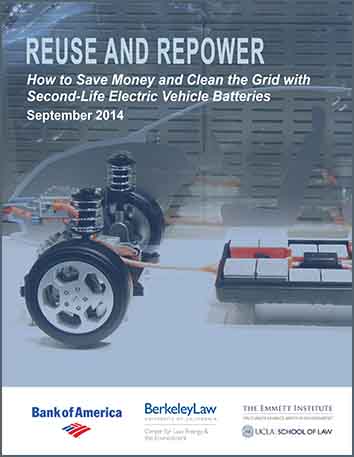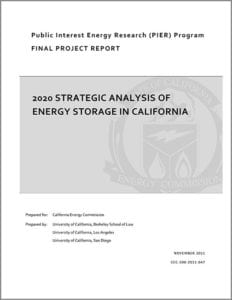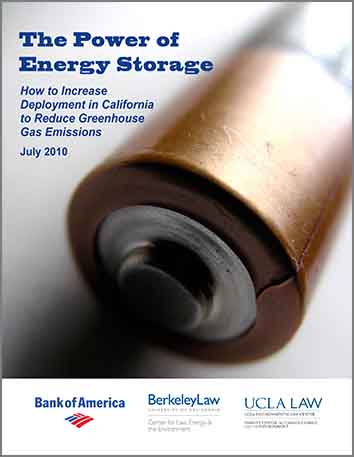September 2014
Reuse and Repower: How to Save Money and Clean the Grid with Second-Life Electric Vehicle Batteries

Electric vehicle batteries that no longer have convenient range in the vehicle can still be repurposed and stacked to provide inexpensive energy storage to help decarbonize the electricity sector.
Key policy recommendations: support for more second-life battery demonstrations, regulatory reform for rules that inadvertently prevent investment in this potential market, clearer liability to determine who pays in the event of damages from second-life battery usage, and more data sharing on electric vehicle battery life both in the vehicle and in grid applications.
Also see our report release webinar.
November 2011
2020 Strategic Analysis of Energy Storage in California
As California progresses towards its goal of 33 percent renewable electricity generation , the potential for energy storage to help integrate renewable resources and maintain a reliable and efficient electric grid takes on great significance. The report assesses current energy storage technologies, discusses the diverse policies affecting deployment in California, and outlines critical technology gaps, future research needs, and policy reforms. It also provides a reference framework for the Energy Commission, CPUC, and other regulatory agencies to use as they develop solutions for how commercially ready energy storage technologies can be cost ‐ effectively applied in California, and enable and accelerate the implementation of more renewable generation.
July 2010
The Power of Energy Storage: How to Increase Deployment in California to Reduce Greenhouse Gas Emissions
Energy storage, through technologies such as batteries, flywheels, and compressed air, will be critical to integrating intermittent renewable energy, like solar or wind, into the grid.
Key policy recommendations: Revised utility and grid operator procurement policies that allow competition from energy storage technologies, tax benefits for energy storage projects, and the creation of a separate asset class for energy storage.

